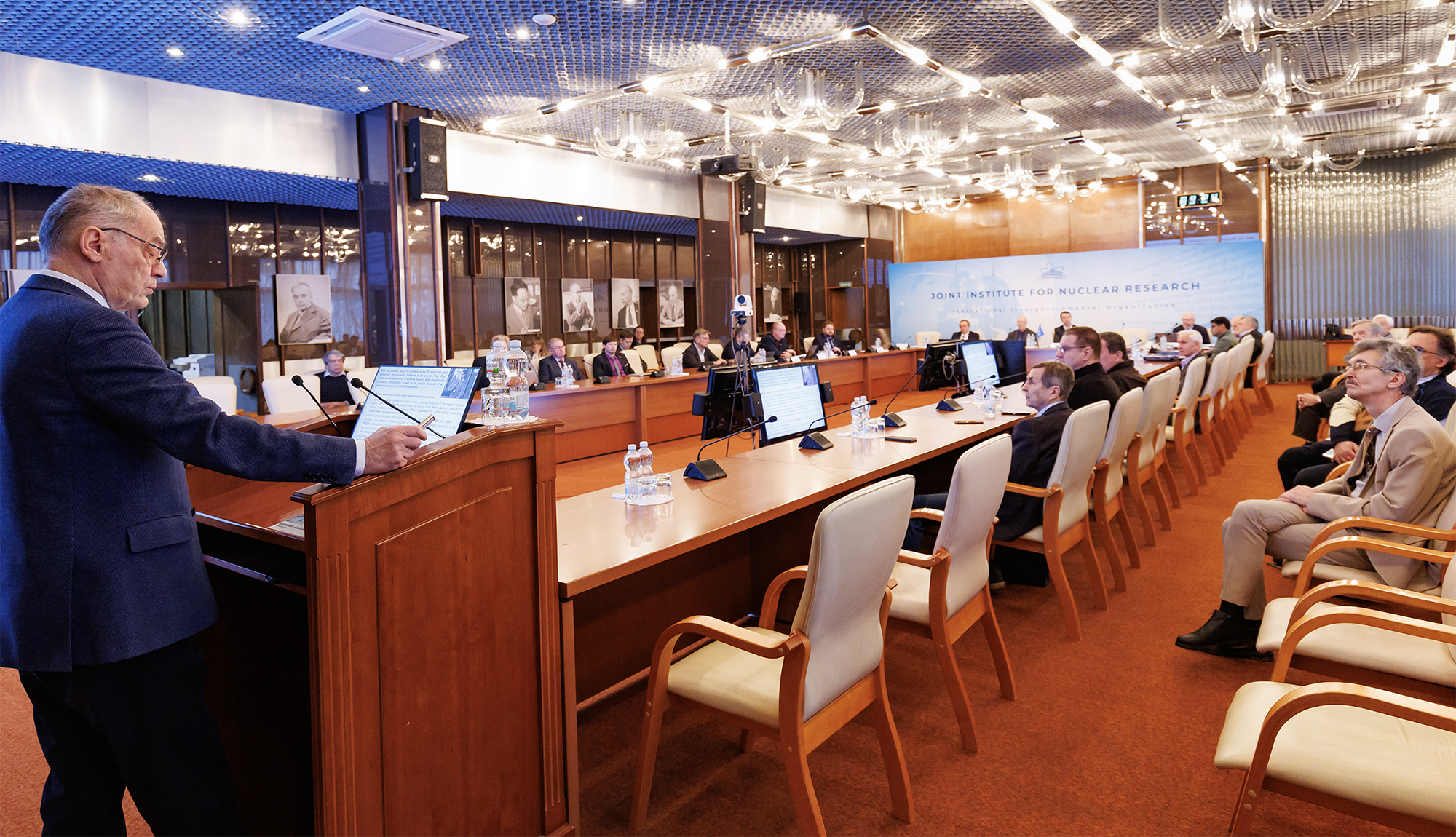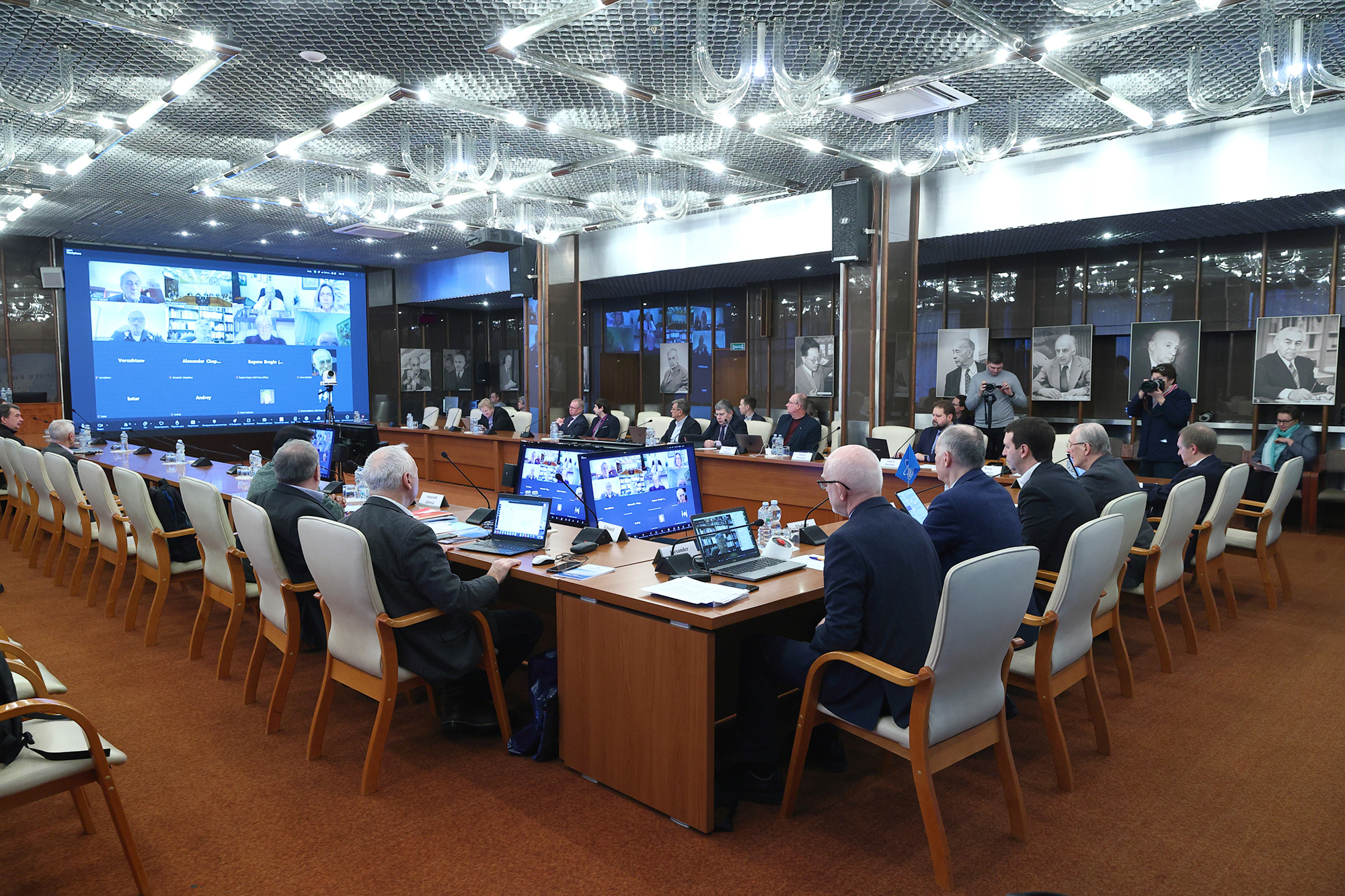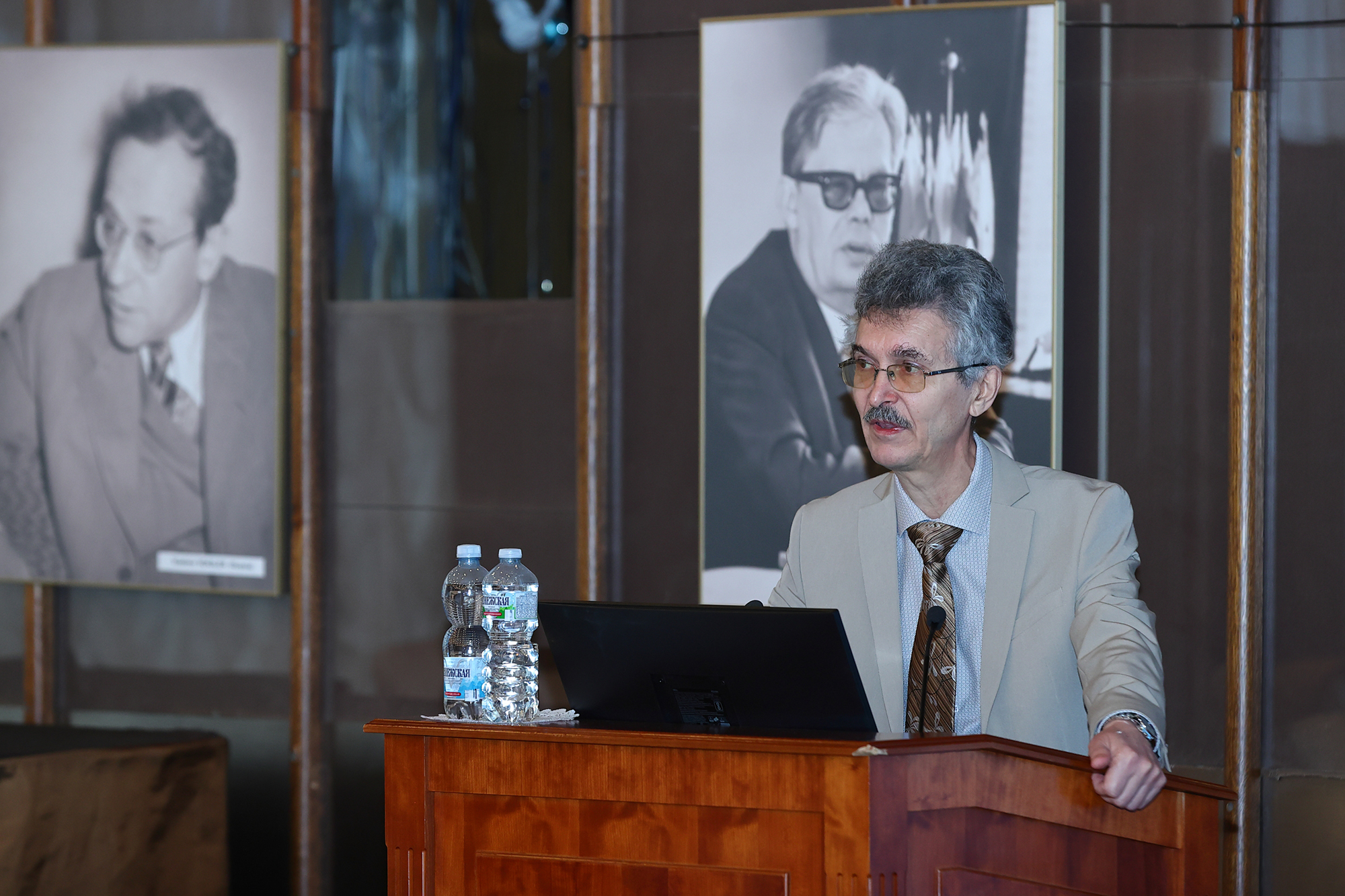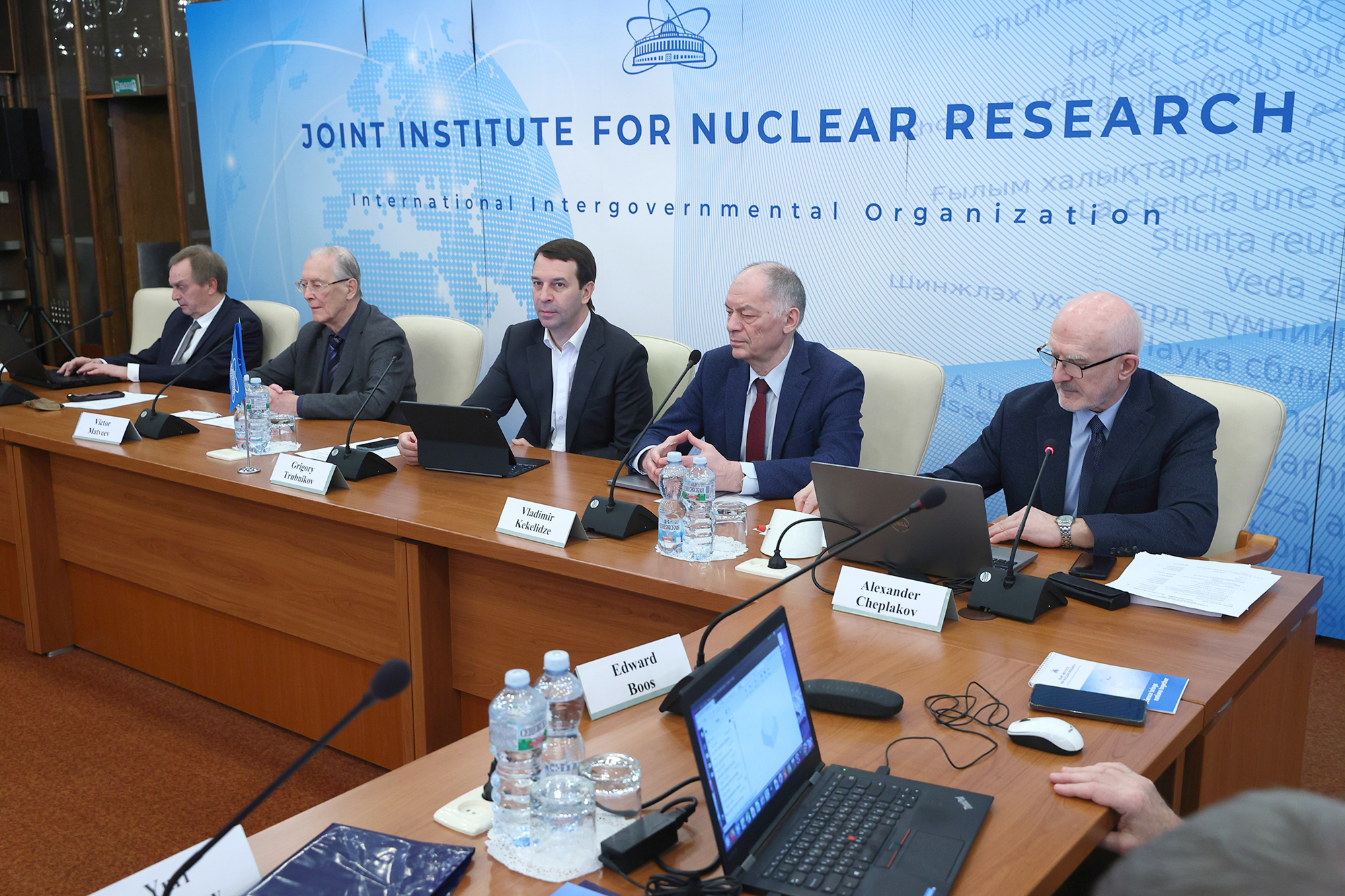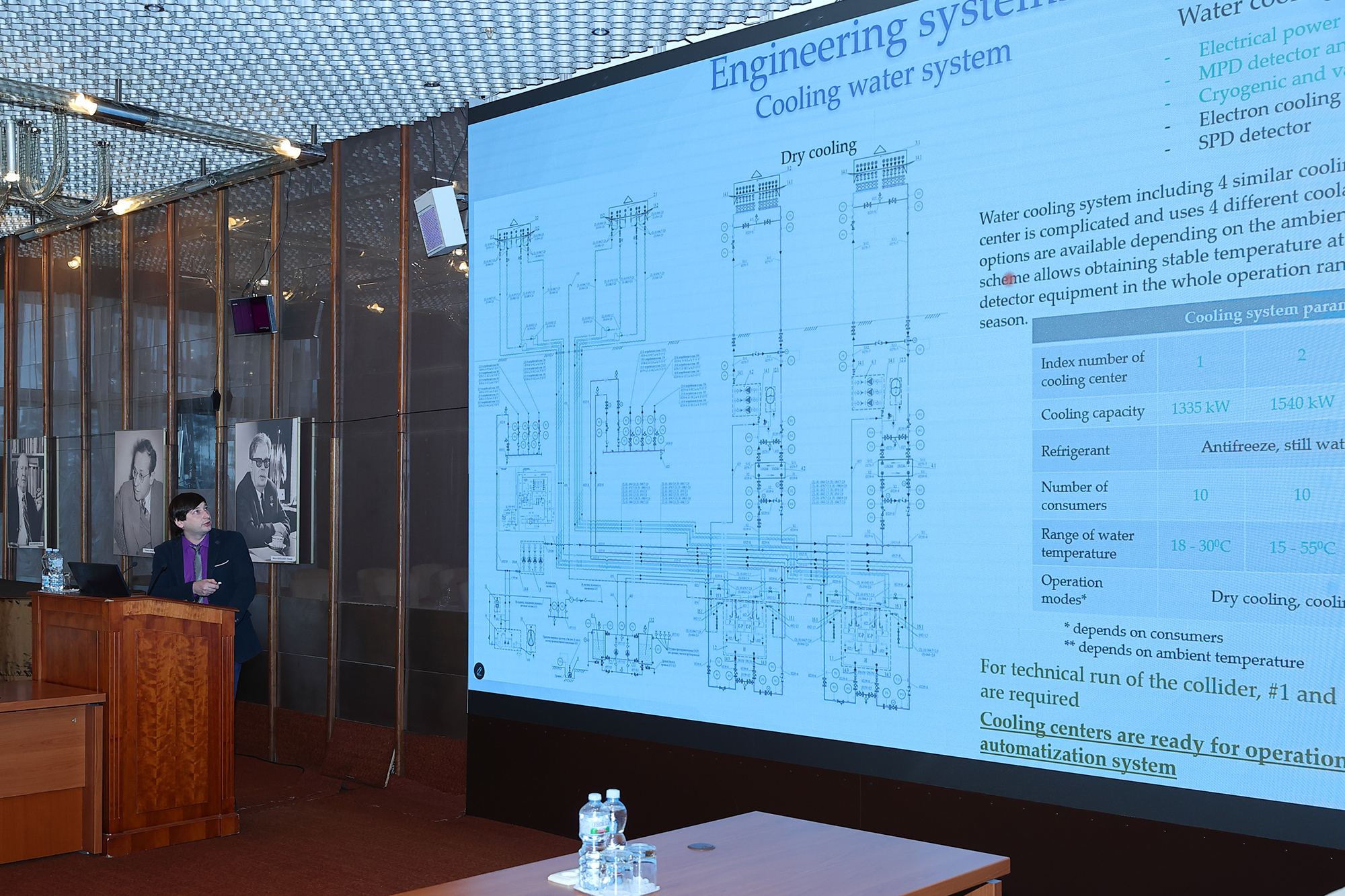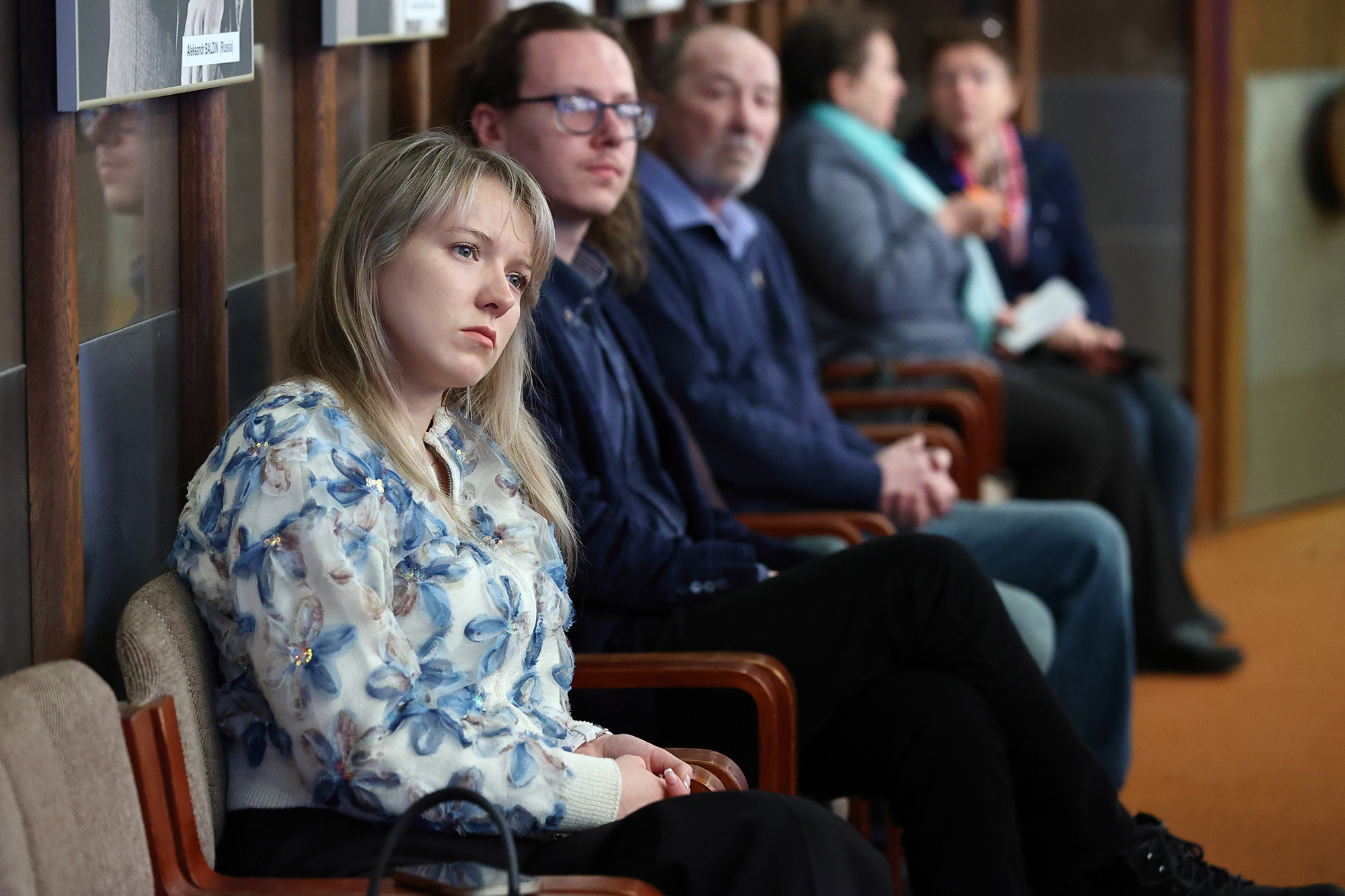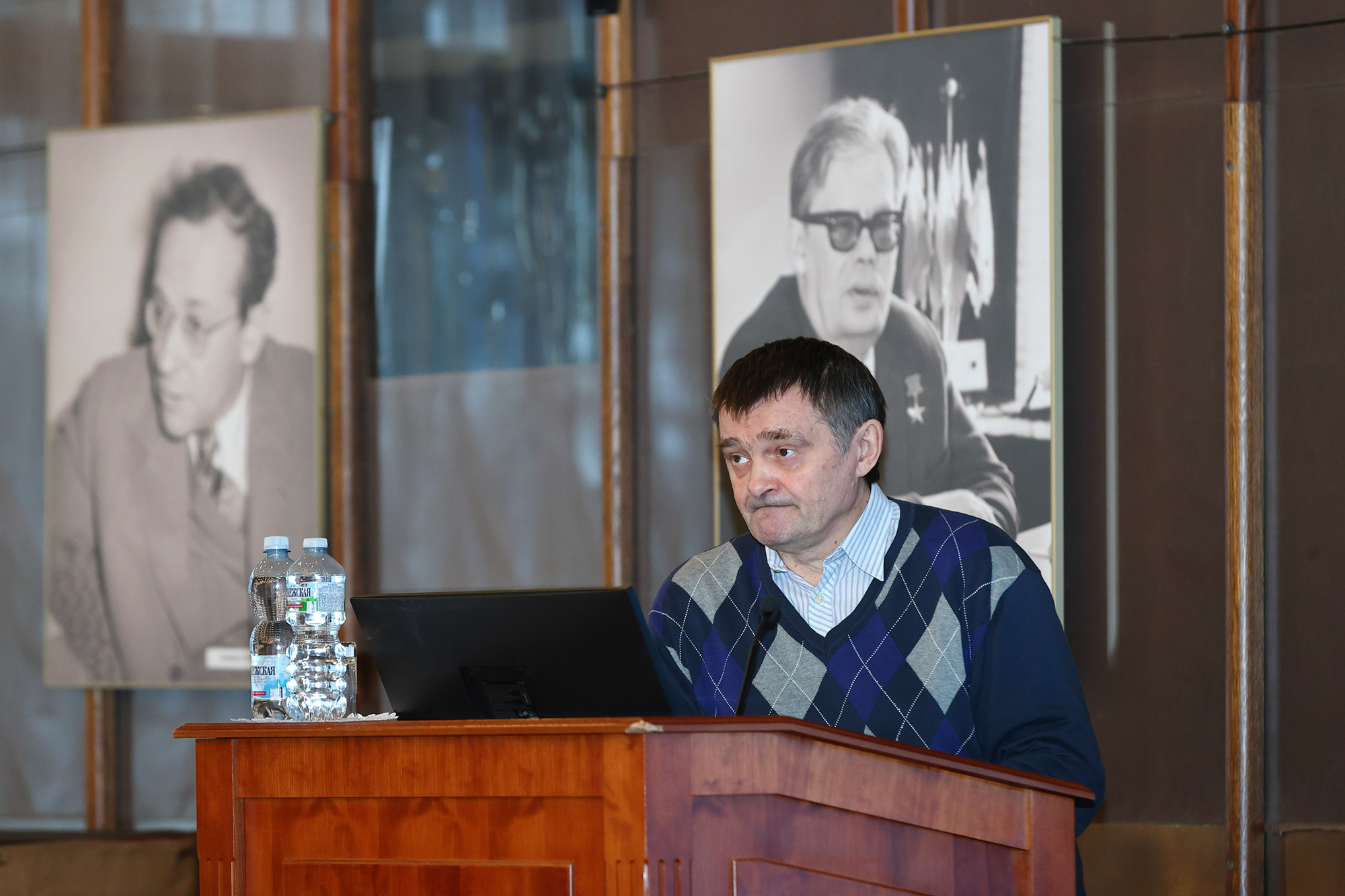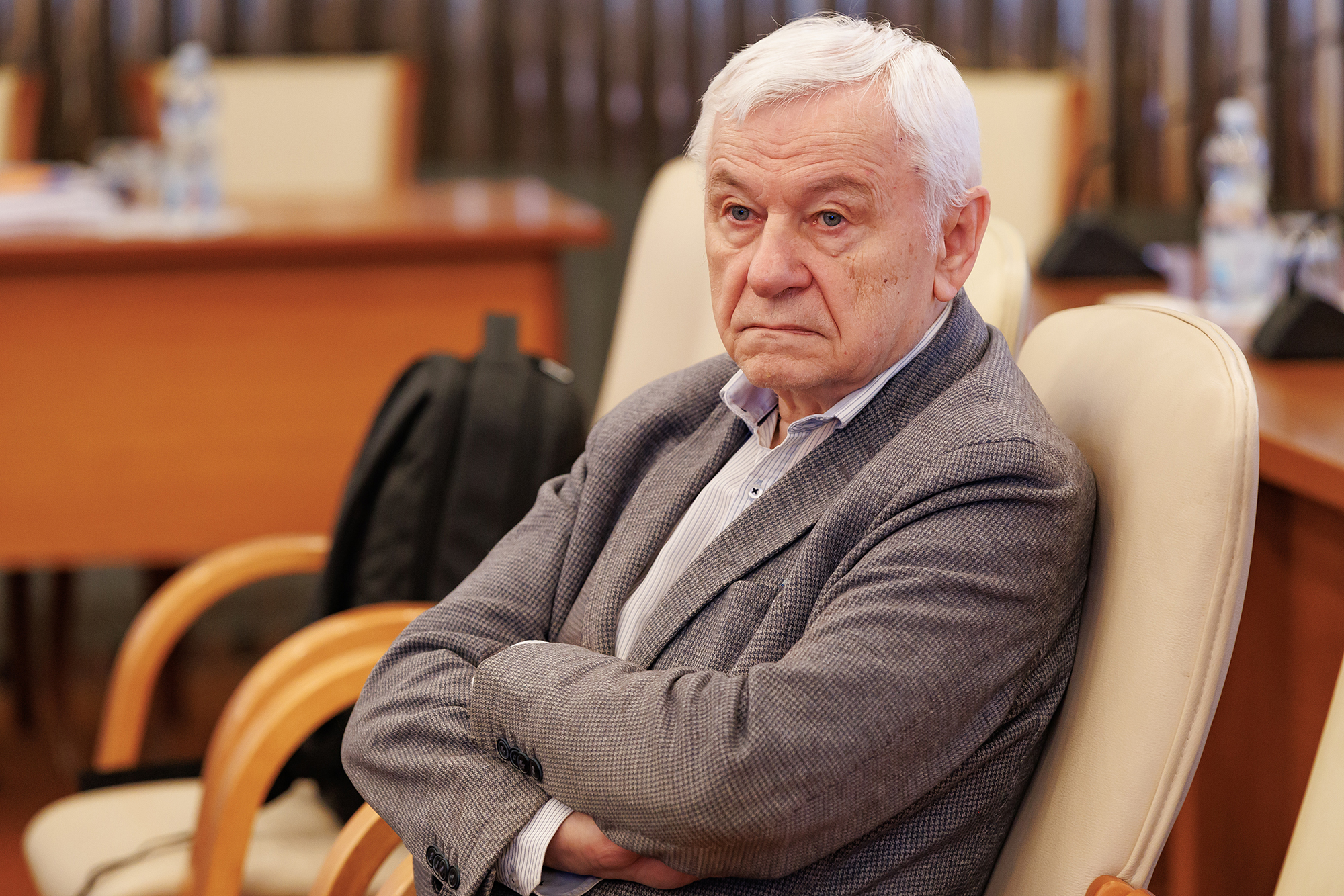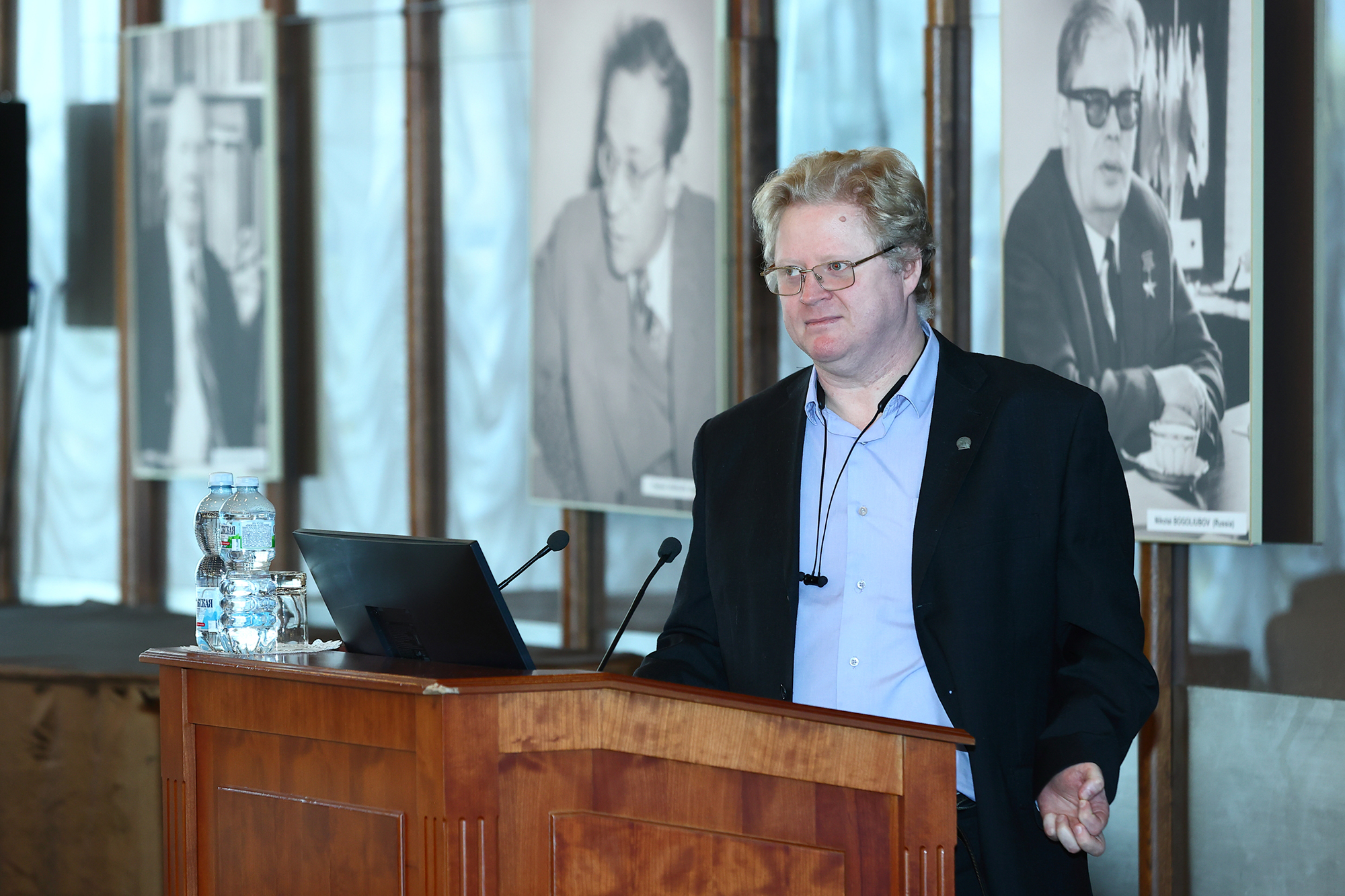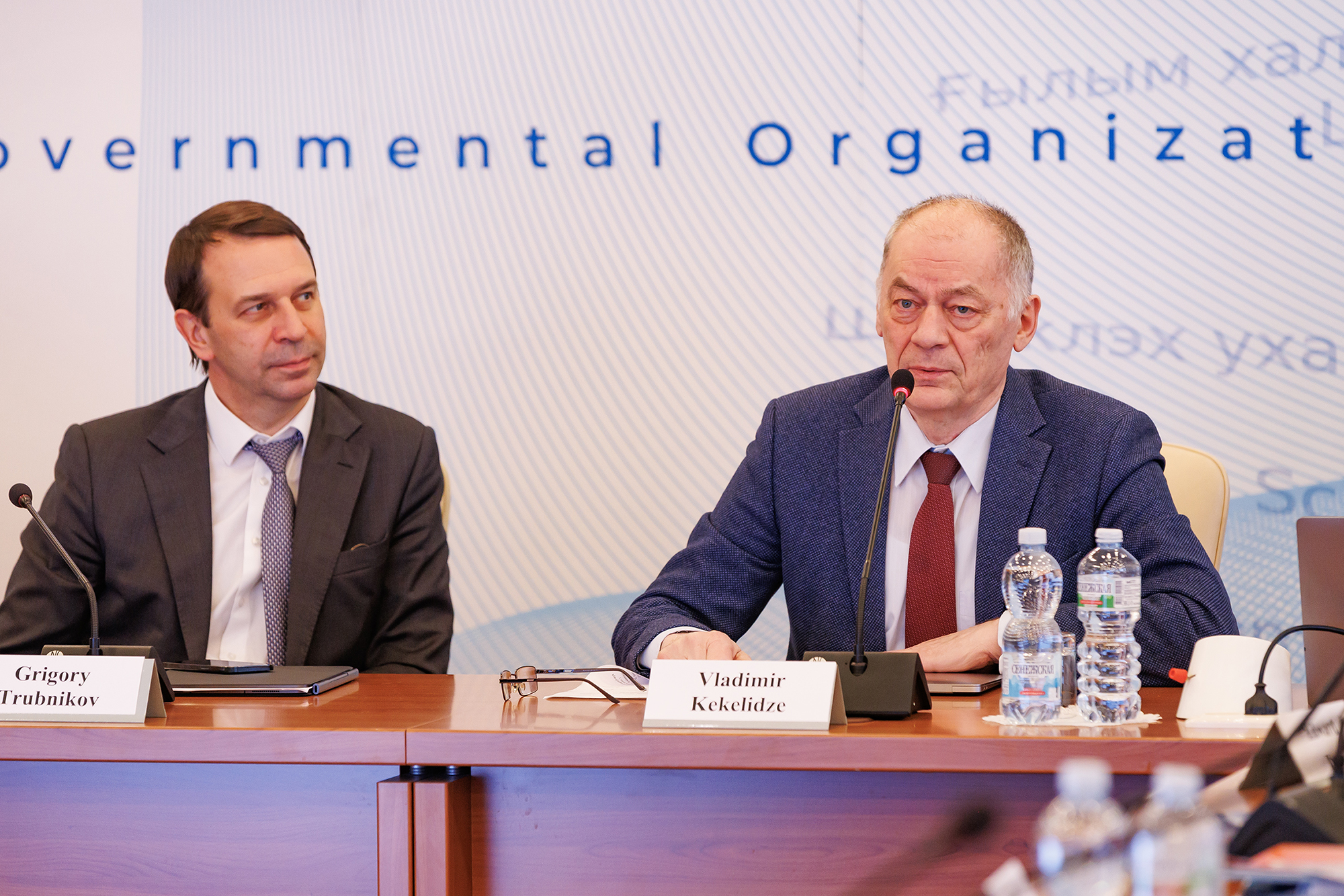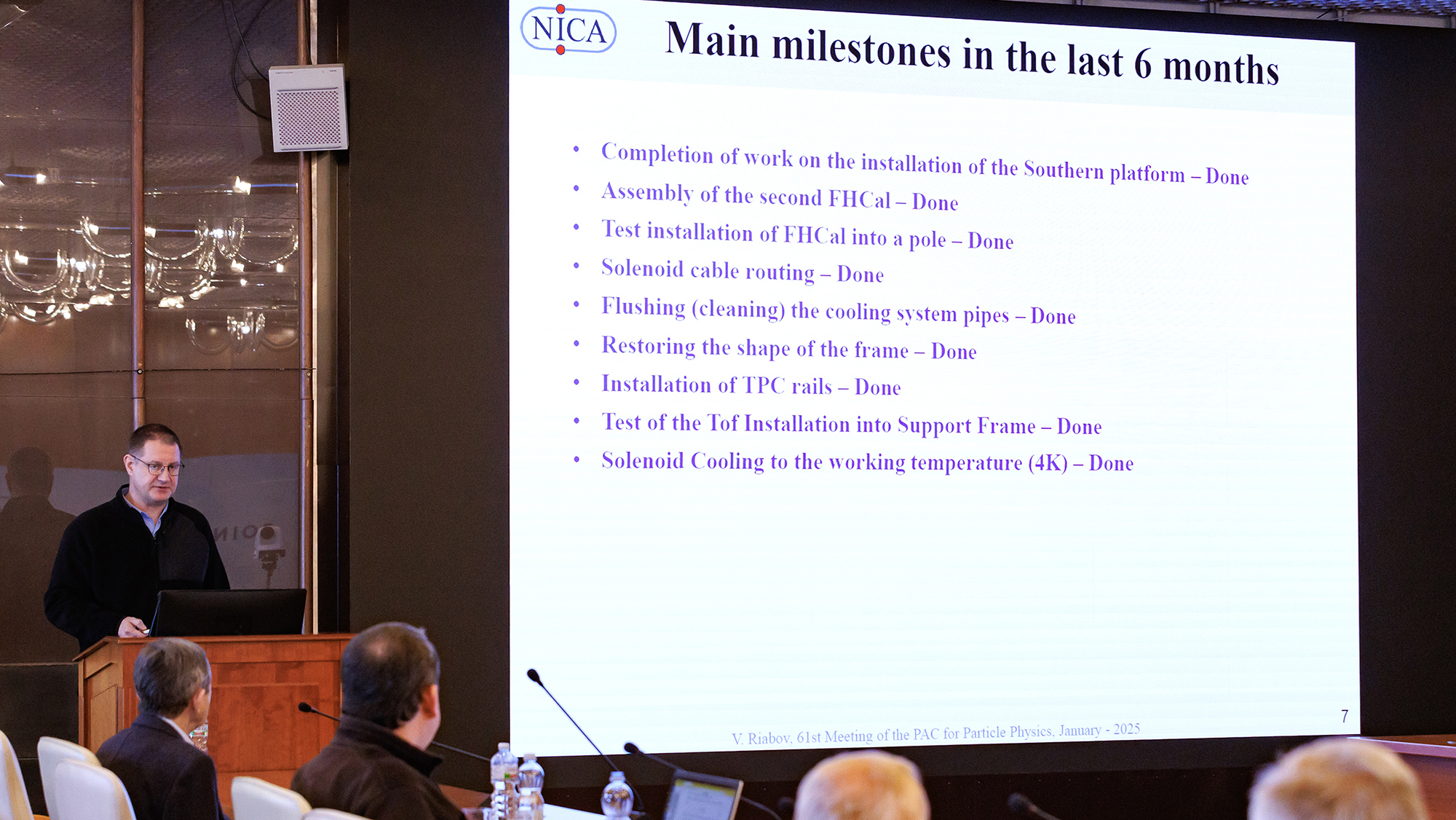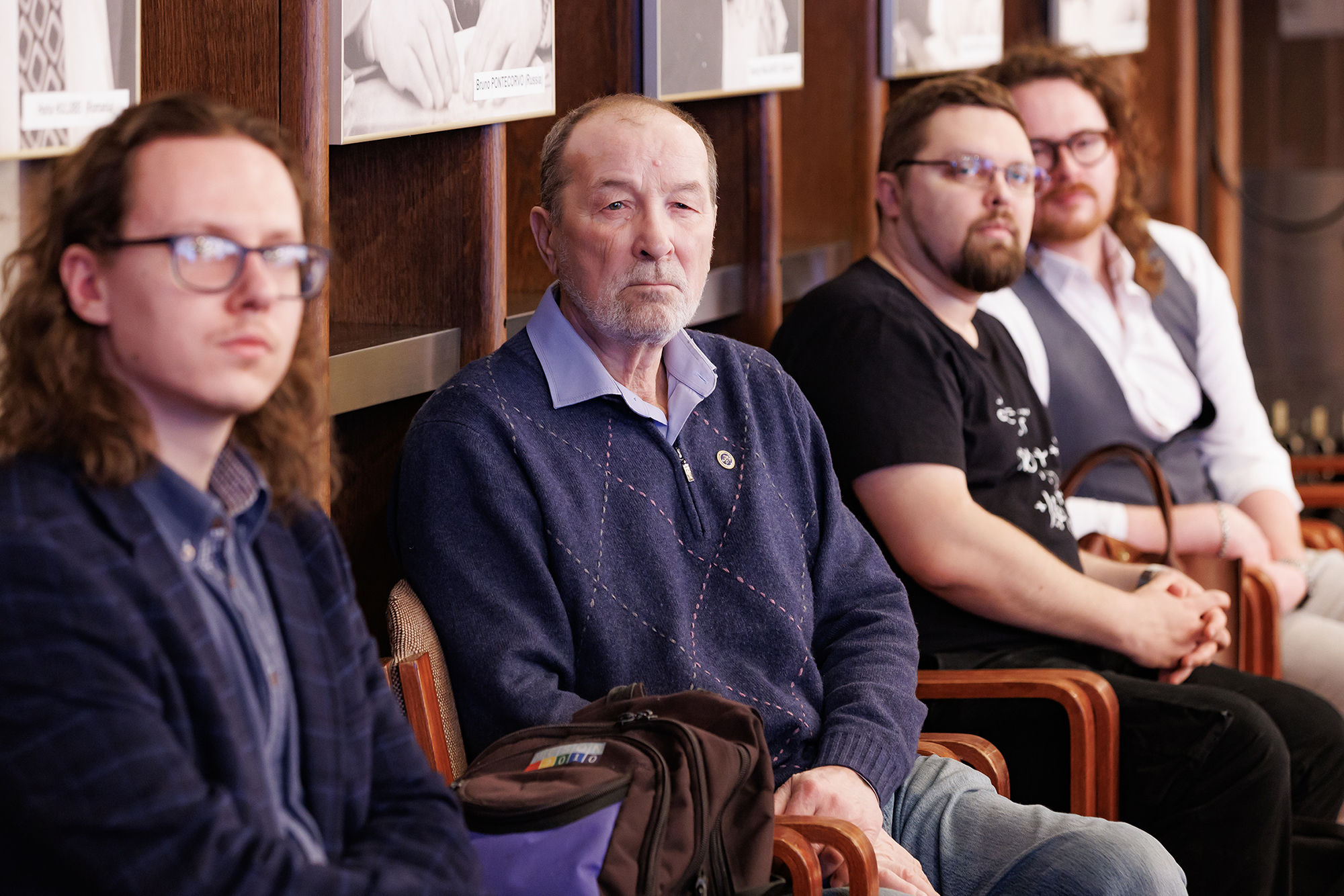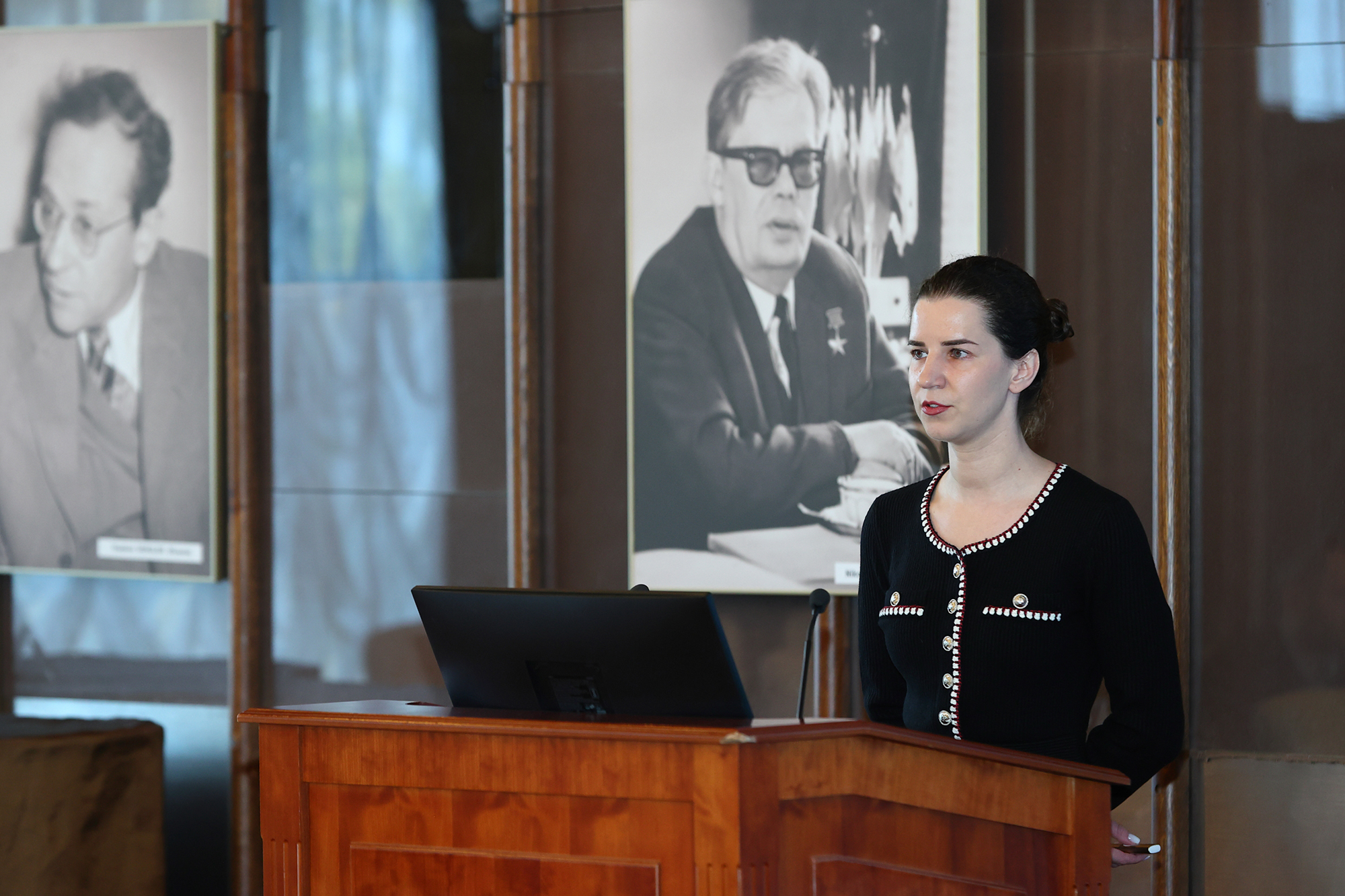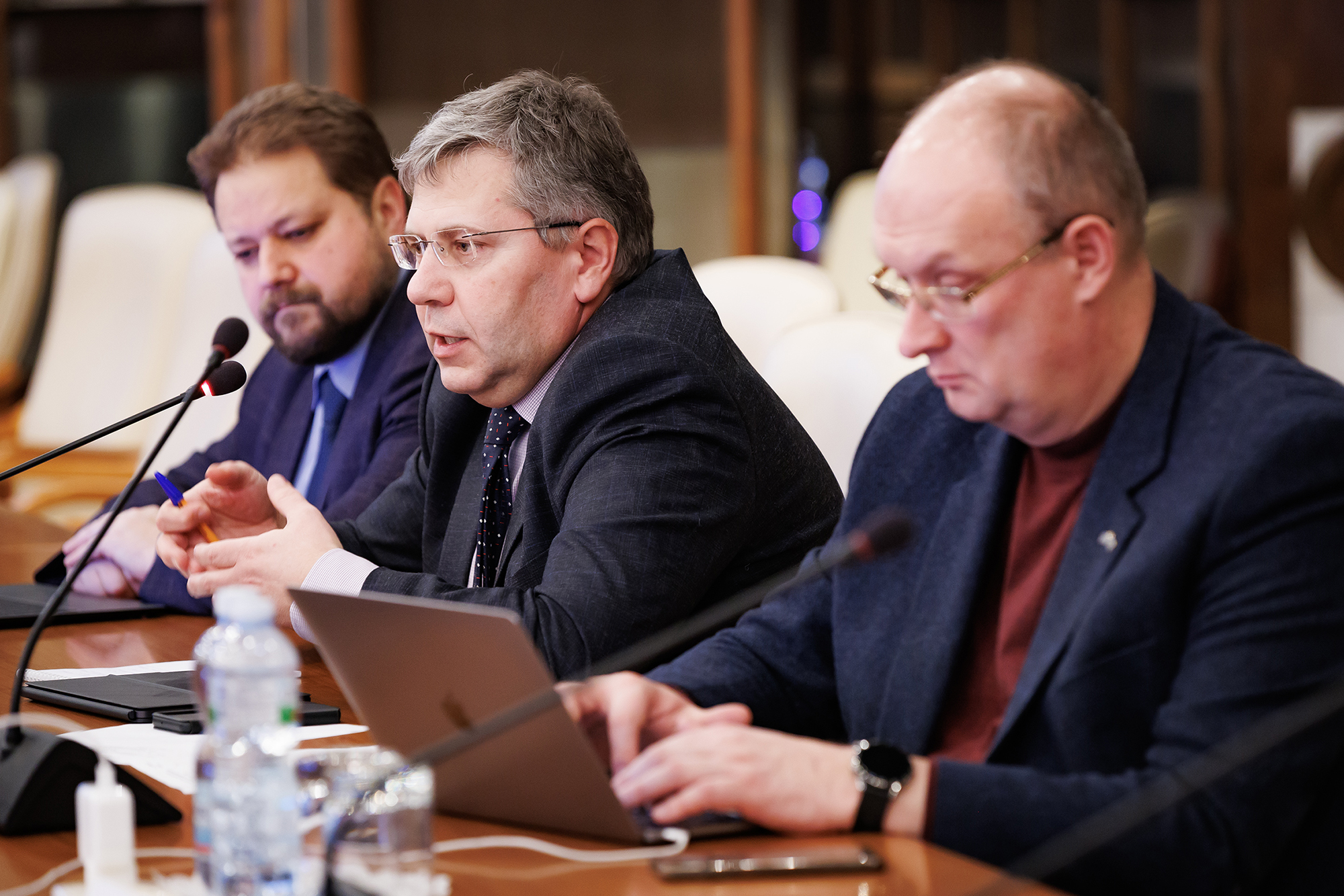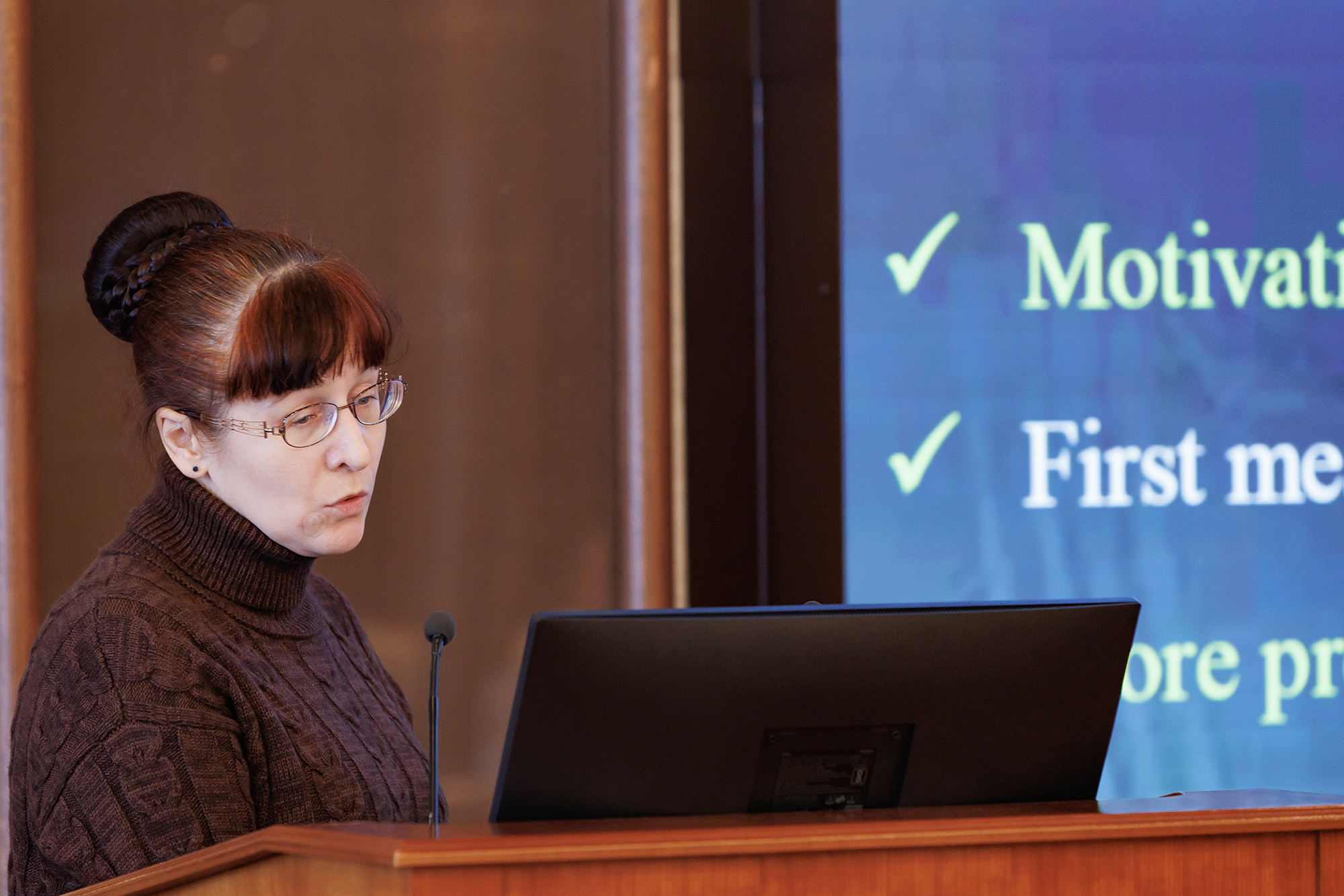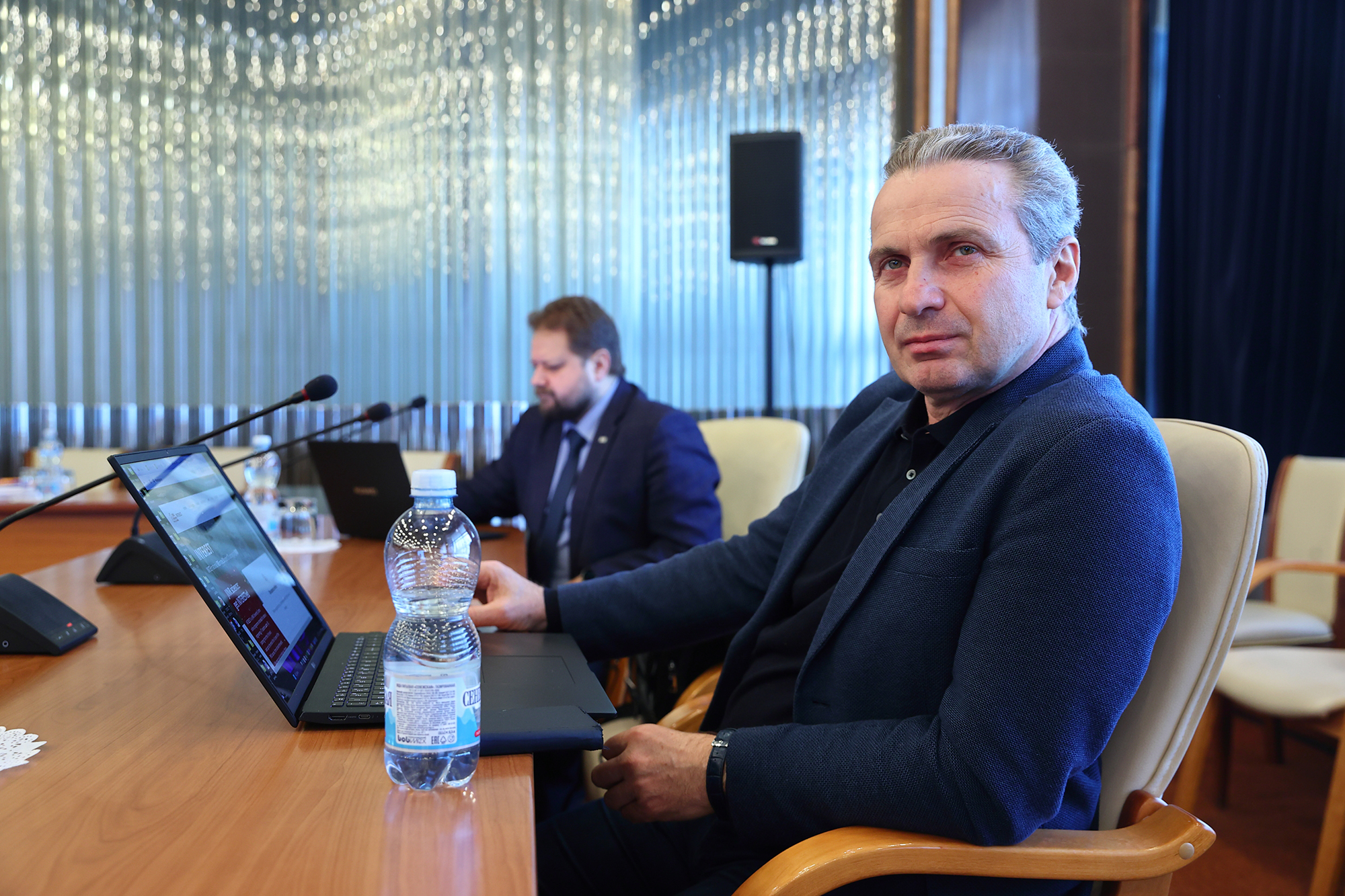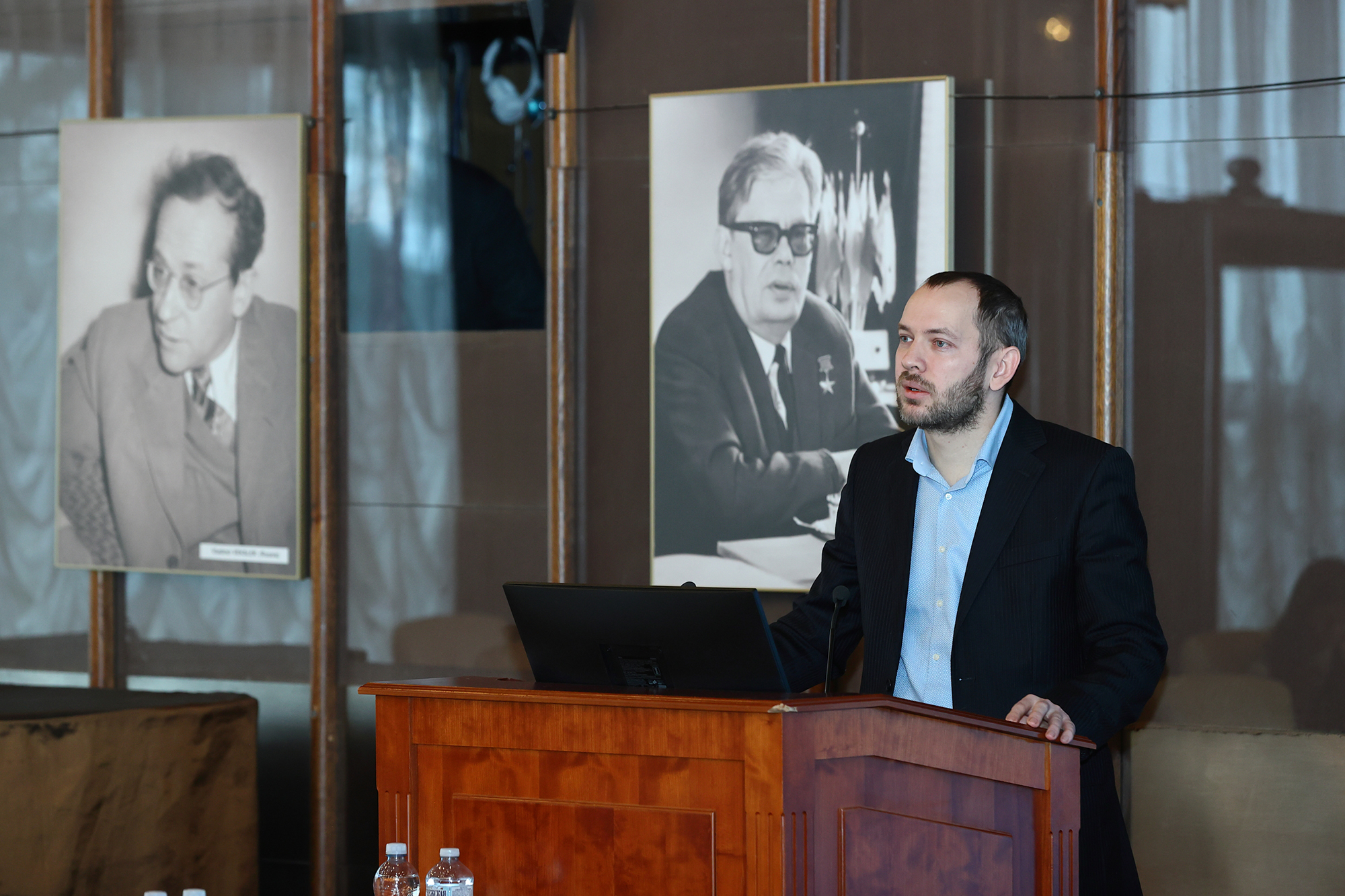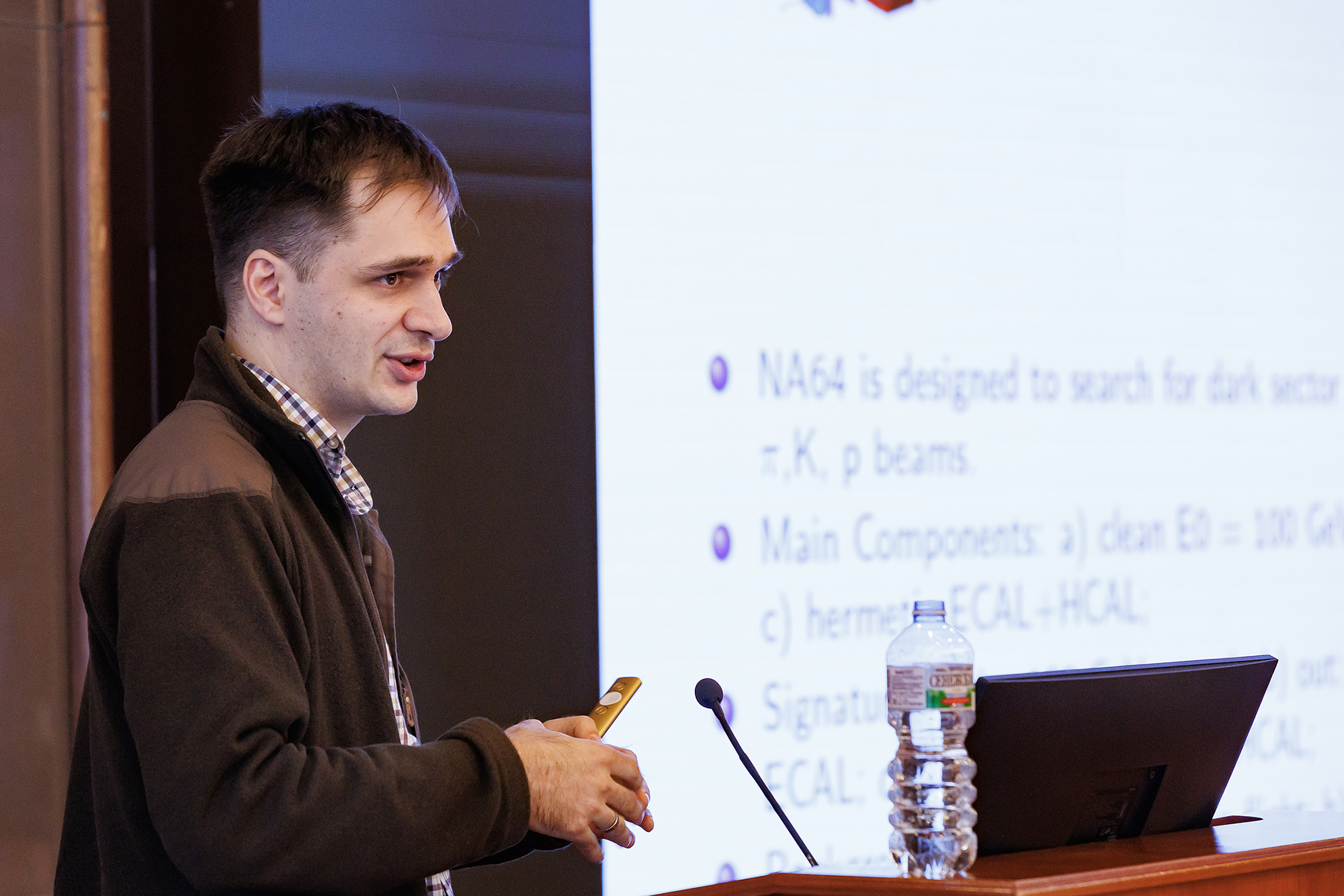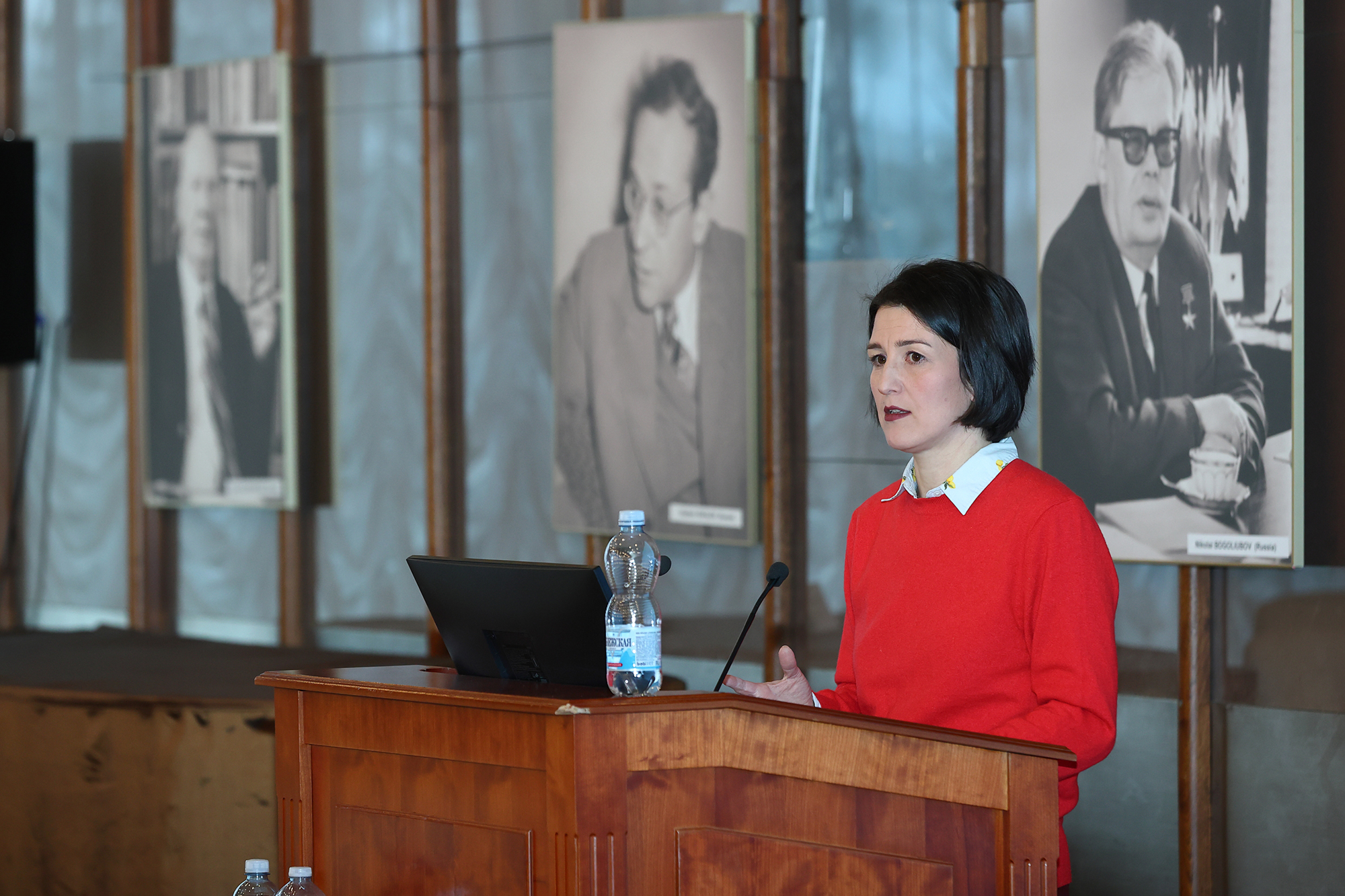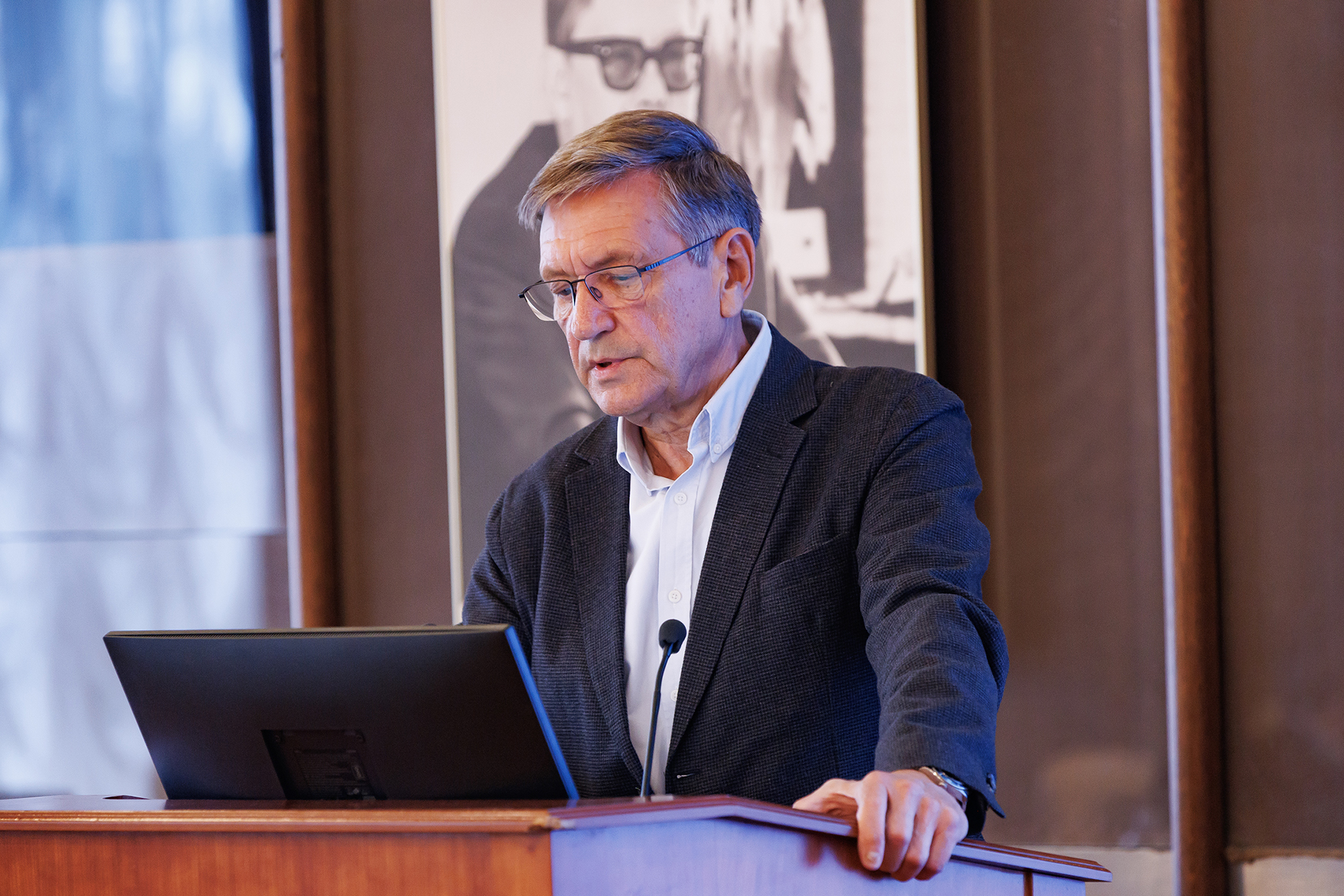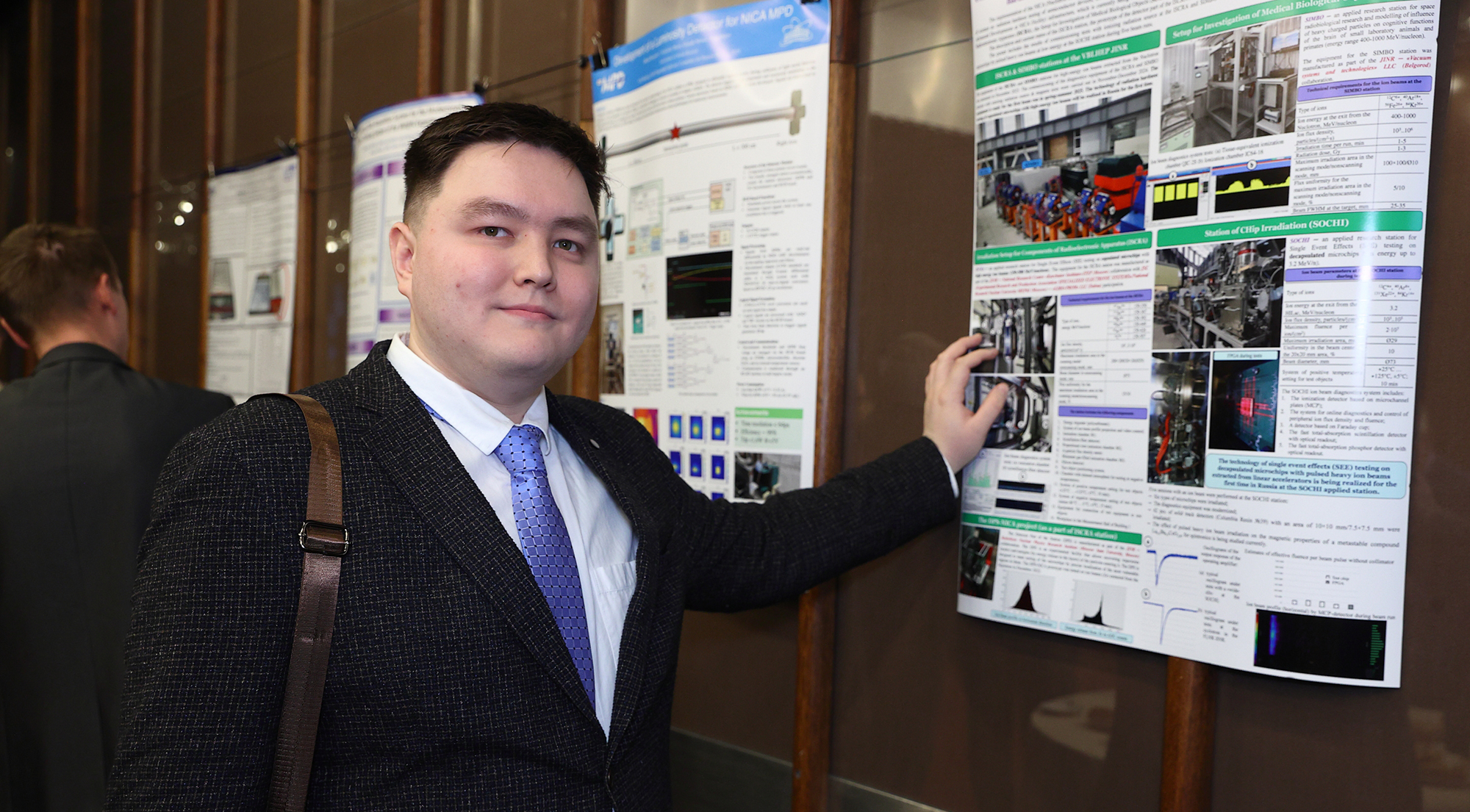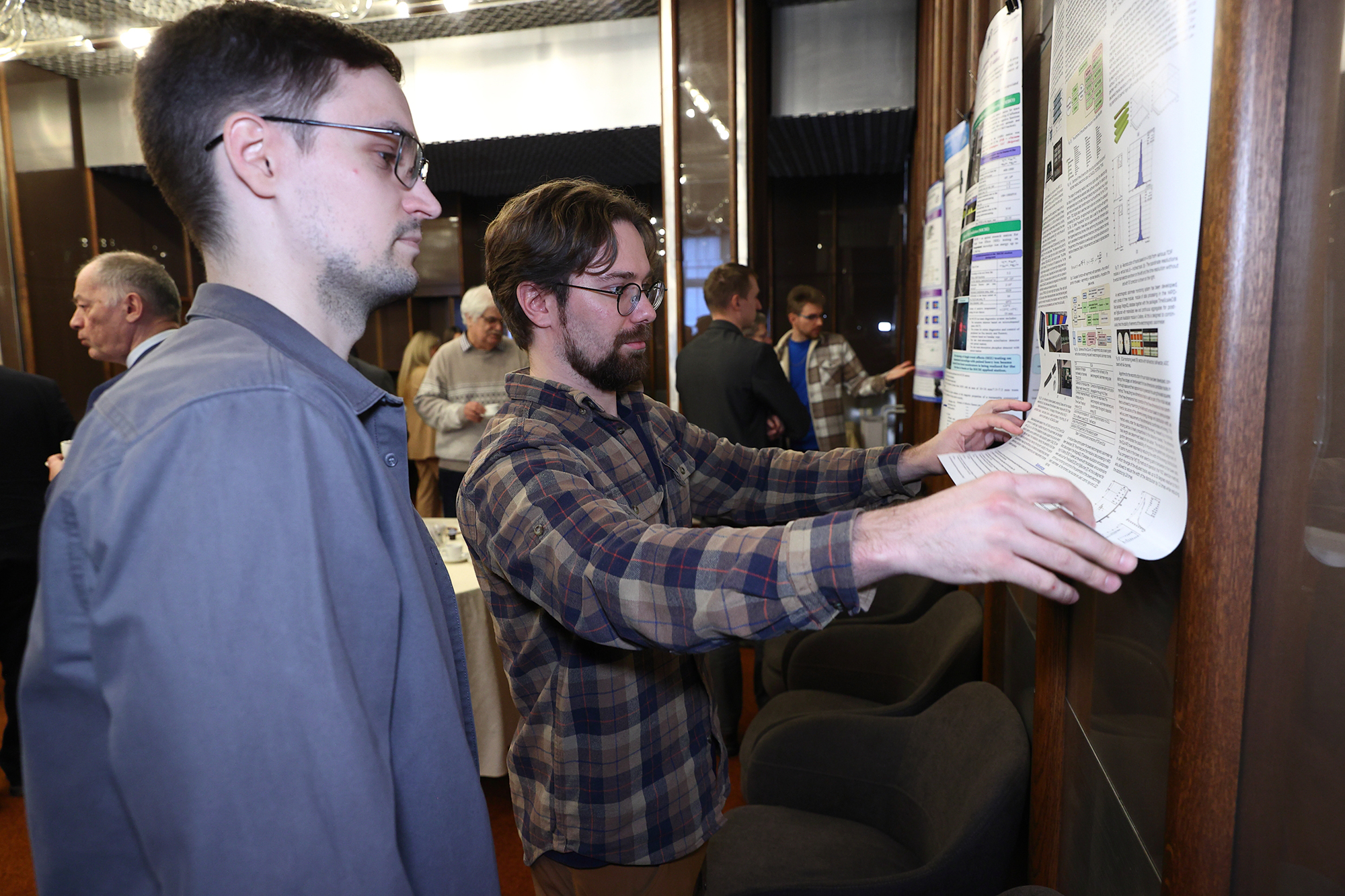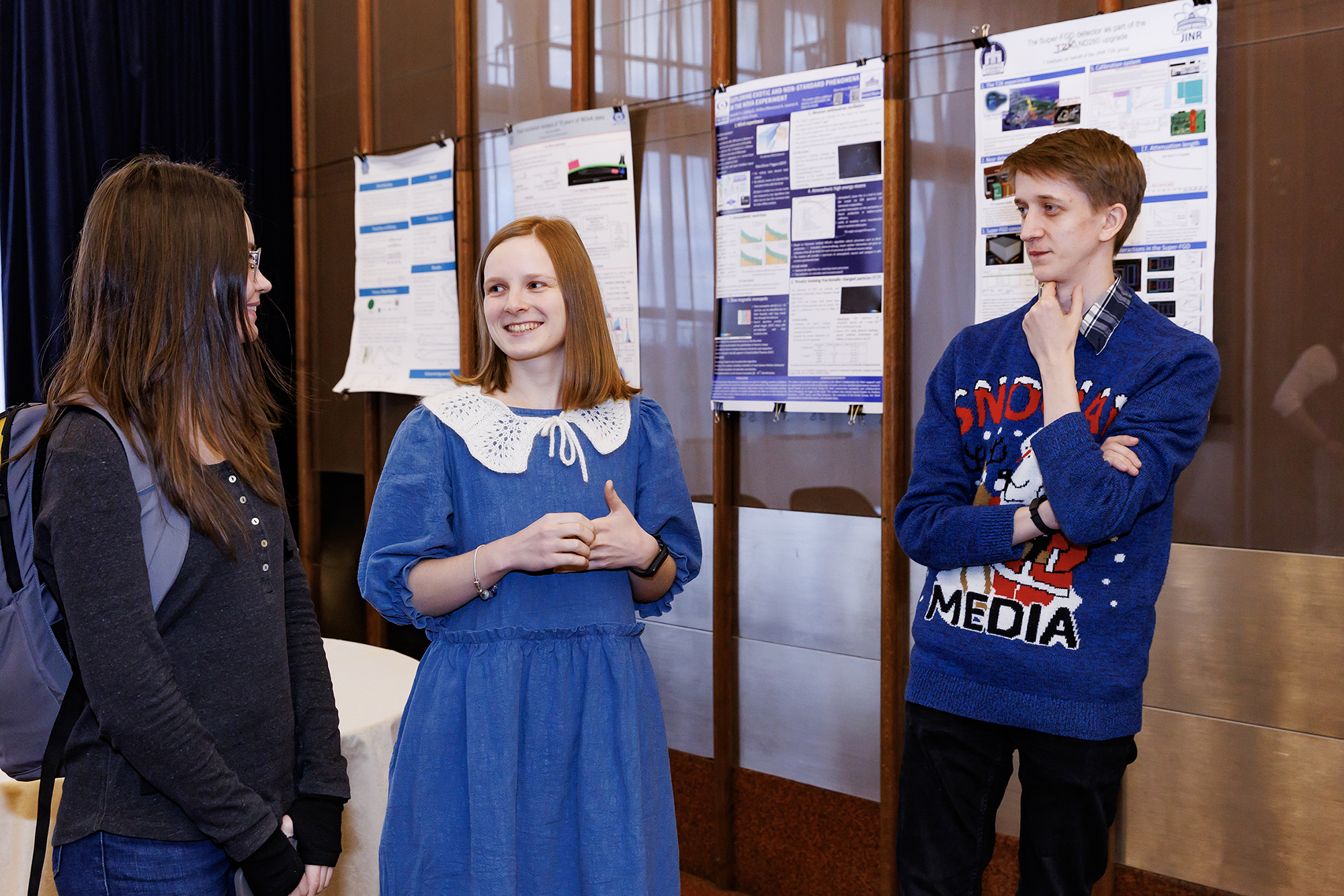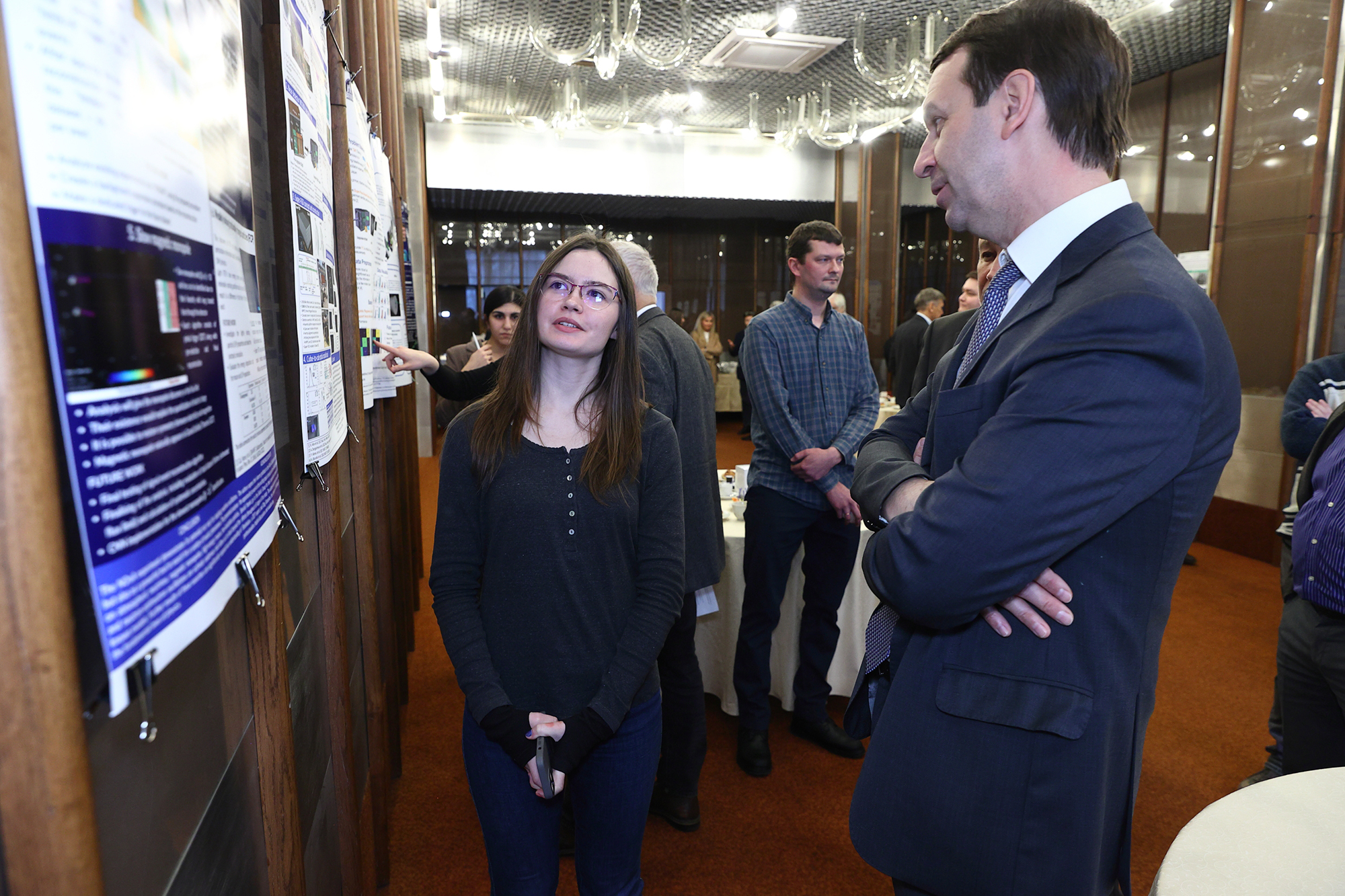PAC for Particle Physics meeting: discussing NICA’s progress and laying out plans
News, 23 January 2025
On 20 January 2025, the 61st meeting of the Programme Advisory Committee (PAC) for Particle Physics took place at the JINR International Conference Centre. The progress of the NICA Megascience Project was top of the event’s agenda. The programme included talks on the implementation of current projects and proposals for launching new ones and prolonging those nearing completion. Employees of the Joint Institute shared the latest research results of international collaborations. The event finished with a poster session by young scientists.
At the opening of the meeting, Chair of the PAC for Particle Physics Itzhak Tserruya informed the participants about the implementation of the recommendations of the previous meeting. The Committee members listened to a talk by JINR Vice-Director Vladimir Kekelidze on the Resolution of the 136th session of the JINR Scientific Council (September 2024) and the decisions of the Committee of Plenipotentiaries of the Governments of the JINR Members States (November 2024).
Deputy Head of the VBLHEP JINR Accelerator Department Anatoly Sidorin provided an update on the Nuclotron-NICA Project, noting the main 2024 results. One of the last year’s highlights was the technological launch of the NICA Collider with the participation of the President of the Russian Federation Vladimir Putin. In advance of the NICA commissioning run, set to take place from January to August 2025, the main elements of the magnet-cryostat system were installed. According to the work programme presented by Anatoly Sidorin, individual functional elements of the complex will be adjusted in parallel with the assembly of the collider and the beam transport line. During the previous runs, the KRION-6T Heavy Ion Source, the HILAC Linear Accelerator, and beam transport channel were optimised to boost the efficiency of Xe beam generation. “All systems are ready for beam accumulation at injection energy,” Anatoly Sidorin emphasised. “In the near future, we expect a significant increase in beam intensity by several times.”
DLNP JINR Deputy Chief Engineer Konstantin Mukhin delivered a talk on the readiness of the NICA engineering infrastructure. In 2024, the Institute received a new license for the construction of radiation sources, the lack of which would have made it impossible to continue building the NICA Collider, and a permission to commission the reconstructed main JINR Dubna Distribution Substation No. 1 on the VBLHEP site. Its capacity is 40,800 kV. The Joint Institute facilities will use 34,300 kV.
The main construction work of building No. 17 of the NICA Collider Complex is completed. The engineering equipment of the water cooling and power supply systems is ready for the commissioning of the collider and the MPD Detector. The cryogenic support system is being prepared: satellite refrigerators and required compressor equipment were manufactured, cryogenic pipelines for supplying liquid helium to the collider were installed and tested. VBLHEP employees dedicated considerable effort to automating the engineering systems of the accelerator complex.
Head of the VBLHEP JINR Scientific and Experimental Department of Baryonic Matter at Nuclotron Mikhail Kapishin made a presentation on the progress of the BM@N Experiment. The BM@N Collaboration is focusing on calibrating the time-of-flight system and developing methods of centrality determination of Xe-CsI collisions at 3.8 A GeV. The MLIT JINR computing resources are being utilised to process data obtained in the past experiments. The collaboration members are discussing the results of a study of the formation of protons, deuterons, and tritons in argon-nuclear interactions at 3.2 A GeV. According to Mikhail Kapishin, a new publication on this topic is being prepared. In addition, preliminary results of a research of neutron emission spectra in Xe+CsI interactions at 3.8 A GeV were presented. The next physics run with a xenon beam at 2-3 A GeV is scheduled for 2025.
DLNP JINR Deputy Director and SPD Collaboration co-spokesperson Alexey Guskov discussed the development of the SPD Project at the NICA Collider. Two new organizations joined the collaboration: NRF: iThemba LABS (South Africa) and the Higher Institute of Technologies and Applied Sciences (InSTEC, Cuba), which signed memoranda of understanding. Potential cooperation is being discussed with Shandong University (China), the University of Science and Technology of China (USTC), and the Vinča Institute of Nuclear Sciences (Serbia). Alexey Guskov highlighted that in November 2024, DLNP JINR Deputy Chief Engineer Nikolay Topilin was appointed the new SPD Chief Designer. An important event was the publication of the technical design report (TDR) of the SPD Detector in the first issue of the new JINR journal Natural Science Review.
In the second half of 2024, the collaboration participants began active work on engineering the detectors and subsystems of the first stage of the SPD Project: a superconducting solenoid and a satellite cryogenic system, a muon system, a straw tube-based tracking detector, a Micromegas-based central tracker, a beam-beam counter (BBC), a zero degree calorimeter (ZDC), and an end-cap electromagnetic calorimeter (ECal).
Infrastructure and software for processing and analysing experimental data are being developed. In December 2024, the first large Monte Carlo simulation was carried out using the distributed data processing system of the MLIT JINR Multifunctional Information and Computing Complex and the facilities of the Kurchatov Institute. The result was more than 200 million events. Over 500 terabytes of backup copies of the obtained data is stored on the distributed resources of JINR and the Kurchatov Institute. Work is underway to connect other collaboration participants to this system.
The ongoing preparation of the experiment’s second stage includes research and development of a silicon vertex detector, a time-of-flight (TOF) system, and a Cherenkov (FARICH) system for particle identification.
A proposal to continue of the Multipurpose Detector Project and its progress were presented by Chief Researcher at the VBLHEP JINR Sector of Elementary Particle Identification, MPD Collaboration Spokesperson Victor Riabov. As part of the first stage of the experiment, the production of the main elements of all detector subsystems is being completed. At the moment, the following parts were manufactured and are now at the stage of assembly, testing, and adjustment: a carbon fibre support frame, a time-of-flight (TOF) measurement system, a forward hadron calorimeter (FHCal), and a fast forward detector (FFD). In addition, Victor Riabov noted that about 83% of the components of the electromagnetic calorimeter (ECal) are ready. The remaining modules are planned to be prepared by April 2025, after which the assembly of the half-sectors (“baskets”) of the calorimeter and their installation will begin. The assembly and testing of the time projection chamber (TPC) will begin in May, and its installation in the experimental pavilion is scheduled for autumn 2025.
The research programme involved measurements of the characteristics of various types of particles, including light mesons and hyperons, resonances, light nuclei and (hyper)nuclei, direct photons, and dileptons. In its basic configuration, the MPD Facility will be able to measure collective fluxes and particle correlations with high efficiency, depending on the collision centrality, transverse momentum, and particle velocity. Recent research results were presented at international conferences and workshops. Over the entire period of the collaboration’s work, more than 250 articles were published in peer-reviewed journals. “The launch of the experimental facility by the end of 2025 remains our top priority,” Victor Riabov emphasised. “MPD has every chance of becoming a flagship project in heavy ion collision research, comparable to other similar experiments in this energy range.”
Deputy Head of the DLNP JINR Scientific and Experimental Department of Elementary Particle Physics Liudmila Kolupaeva made a proposal to launch a new project dedicated to JINR’s participation in the programmes of international accelerator neutrino experiments: NOvA, T2K, FASER, and NA65 (DsTau).
Over the past few years, employees of the Joint Institute significantly contributed to the development of these experiments, obtaining results and taking leadership positions in the collaborations. The proposed initiative is aimed at creating a project as part of the Topical Plan that would include JINR’s participation in NOvA, T2K, FASER, and DsTau. It is designed to enhance the intellectual contribution of the Institute to the development of these experiments through synergising subgroups, supporting and intensifying existing activities, and setting new tasks. Such scientific goals can attract students and young JINR employees to the project, thereby providing great potential for expanding JINR’s notable participation in one of the most promising areas of modern particle physics.
“Neutrino physics is a fascinating and rapidly developing area of contemporary scientific knowledge,” Liudmila Kolupaeva said. “We are entering a new era of precision measurements of the properties of these mysterious particles, which opens up excellent opportunities for great scientific achievements.”
JINR scientific groups continue to actively participate in the physics programmes of the experiments at the Large Hadron Collider (LHC) at CERN. Elena Rogochaya, Ivan Yeletskikh, and Vladimir Karzhavin presented the research results obtained at ALICE, ATLAS, and CMS.
In the next part of the event, the members of the Programme Advisory Committee heard two scientific presentations. A VBLHEP JINR senior researcher Maria Patsyuk gave a talk about the progress of the SRC Programme in the HyperNIS+SRC Project. A senior researcher at the BLTP JINR Standard Model Sector Alexey Zhevlakov discussed the study of dark matter physics in fixed target experiments.
During the meeting, the results of poster presentations by young scientists on particle physics research were summarised. A senior engineer of the VBLHEP LU-20 Injection Sector Alexei Slivin became the winner of the poster session with the presentation entitled “Construction of the ISCRA and SIMBO Stations for applied research on high energy ion beams. Radiation hardness testing of microchips by low energy pulsed ion beams at the SOCHI Station”. This presentation will be part of the 137th Scientific Council session set to take place in February 2025.
As part of the programme, the PAC members met with the JINR Directorate. At the end of the meeting, they adopted the recommendations of the Programme Advisory Committee and made proposals for the agenda of the next, 62nd meeting, which will take place in June 2025.
